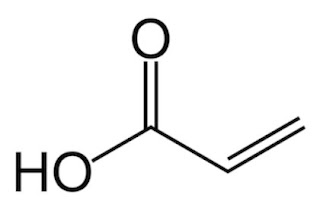SEKAB has been selected by Kanteleen Voima as process technology provider for the NordFuel biorefinery
Type of post: NEWS.
Kanteleen Voima is planning to build a biorefinery that would produce ethanol from wood
next to its thermal power plant in Haapavesi. The Swedish clean-tech company SEKAB
E-Technology confirmed
yesterday that it will provide the core process technology for the new facility.
Its Celluapp process makes it possible to extract cellulose
sugars and lignin from forest or agricultural residues and processing them into
biofuels and renewable chemical products. The technology can be used in new
biorefineries or to develop existing facilities.
Press release: “Finnish bioethanol project worth
millions – Swedish SEKAB provides technology”, 23/4/2019.
Figure 1. Location of the planned biorefinery adjacent
to the power plant in Haapavesi (taken from NordFuel website). 1 – Biorefinery
/ 2 – Feedstock warehouse area / 3 – Biogas and water treatment area.
Name of
the project
|
|
Location
|
Adjacent
to the power plant in Haapavesi, 120 km south of Uleåborg in Northern Finland.
Good
transport links and the availability of raw materials make Haapavesi an
excellent location for a biorefinery. It is located within 100–160 kilometres
of four ports (Kalajoki, Kokkola, Pietarsaari and Raahe) and is surrounded by
forested lands.
|
Total
value of the investment
|
150 M€.
|
Feedstock
|
Soft wood
residues. The raw materials would be transported by road from within a
150-kilometre radius according to the need for materials.
|
Products
and production capacity
|
- Bioethanol:
65,000 tons per year.
- Biogas:
250 GWh per year (it would become the biggest producer of biogas in the
Nordic countries).
- Lignin:
230,000 tons per year.
- Manure:
64,000 tons per year.
|
Timeline
|
- 2016: Kanteleen
Voima began planning the NordFuel project.
- 2017: The
environmental impact assessment of the project was completed.
- Currently: The project’s concept plan has
been completed. The environmental permits for the bioethanol refinery and the
biogas project have been applied for. The project’s technology partner has been
selected. Since March this year, SEKAB is demonstrating the Celluapp
technology with the specific forest residue that will be used in the
facility.
- Next
phase: Plans in preparation for the investment decision.
- 2021:
Expected start-up.
|
In connection with the new investment, the existing
power plant (390 MW) would be transformed into a more efficient CHP plant that
would satisfy strict environmental requirements and improve profitability by
adding steam production to the existing electricity generation process. The
Haapavesi power plant, which uses mainly peat, was built in 1989. The
biorefinery project would make it possible to utilise the well-maintained
infrastructure as well as to change the fuel base of the power plant from peat
to a wood-dominated fuel mixture with lower emissions.





